Zeugma was one of the Roman Empire’s most important and prosperous cities outside of Europe. Situated by a bridge over the River Euphrates it was a vital hub on the Silk Road linking the empire with Asia. Following an invasion and then a devastating earthquake it was abandoned and forgotten.
Originally founded in 300 BC by one of Alexander the Great’s commanders, Seleucus I Nicator, before the Roman general Pompey conquered it in 64 BC. The next few hundred years were the heyday of the city, as it became a major trading hub. A whole legion of troops were based here on the very eastern edge of the Roman Empire. A series of pontoons, which operated as a financially lucrative toll bridge, crossed the Euphrates which was the western border of the Persian Empire.
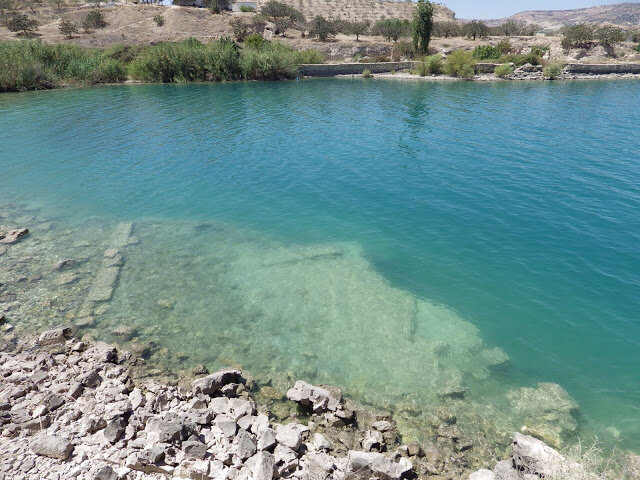
A Roman Villa flooded by the River Euphrates
Rich traders and diplomats built massive villas facing the river, taking advantage of the cooler temperatures in what is otherwise a very arid and extremely hot environment. They imported skilled artisans from Rome to lay intricate mosaics often depicting water scenes as well as ancient Greek and Roman mythology, many of which unique to Zeugma.
Although it was invaded by the Persians in 253 AD the houses were left very much intact, before being damaged and buried in a massive earthquake soon after. The interiors of many of the buildings are comparable to Pompeii, also buried and preserved by a natural disaster.
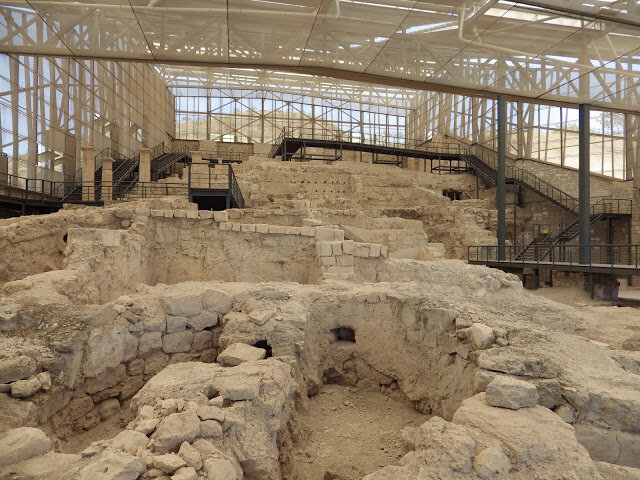
The Archaeological Museum at Zeugma
It was antiquity smugglers who alerted the nearby Gaziantep Museum in 1987 that there was something special buried by the riverbanks. They were disturbed while digging a tunnel into an ancient Roman villa, which was found incredibly intact, from the mosaics on the floor to the household goods still scattered around.
Small archaeological digs followed until the Turkish government announced it was to dam the River Euphrates only 2 km from Zeugma, totally flooding the mainly unexcavated site.
As the flood waters rose higher and higher, there was a lot of pressure to excavate the city. The image below shows the floodwaters rising up over an example of a mosaic.

Below, here is the same mosaic (pictured above) after it was saved and restored from the rising waters.
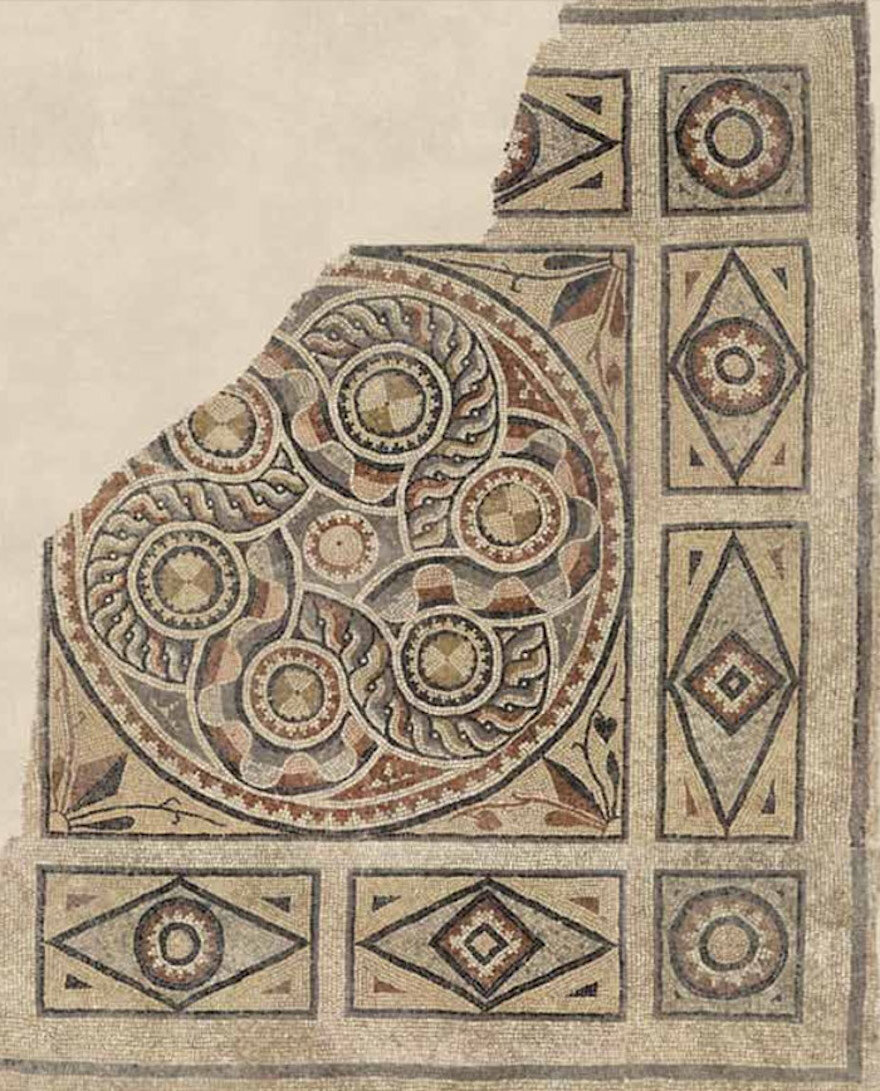
A sense of urgency and a rush of help from European and American institutions led to around-the-clock work to recover the incredible mosaics, even as the waters of the Euphrates began to lap the villas, eventually covering much of lower Zeugma by the year 2000.

Oceanus and Tethys in the Gazientep Mosaic Museum
Excavation still continues on the sites situated on higher ground, and you can visit Zeugma and see the work as it still continues. There is a small winding road from the E90 Sanliurfa-Gaziantep road near Belkis that stops 500 metres from what appears to be a large airport hangar.
There is space for about three cars to park, but that is not a problem, as few visitors seem to make there way here. A hire car is vital to visit, as Zeugma is beyond the reach of any public transport.
A short walk takes you along the shore where you can peer into the sunken villas and see the floors where the mosaics once lay. The new beach that has been created by the dam is made up of a mixture of small rocks and broken Roman pottery, some painted in bright colours, which gives you an idea of how much has been lost by the flooding of the city.
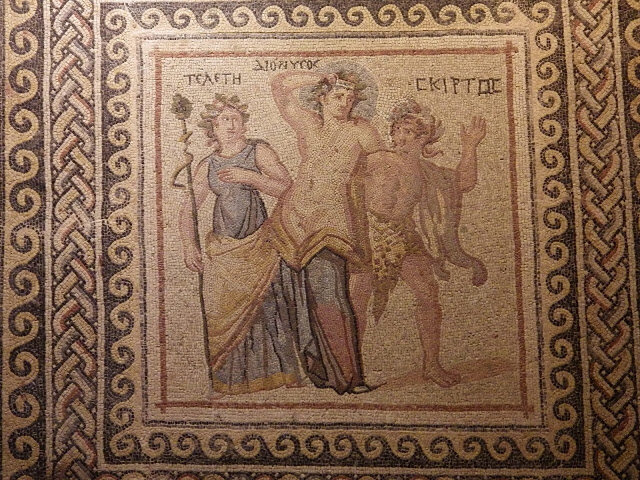
Dionysus, Telete and Satyros in the Gaziantep Mosaic Museum
Inside the large metal structure is an ingenious multi-level viewing platform protecting the remains of five Roman houses. Zeugma was clearly quite advanced, with water and sewerage pipes visible running alongside the roads.
A few mosaics remain, but most have been removed to be put on show at the world-class Zeugma Mosaic Museum in Gaziantep. Although quite a small site it is fascinating to see into the villas, with many still having their original painted walls, and imagine what life was like in this idyllic setting.
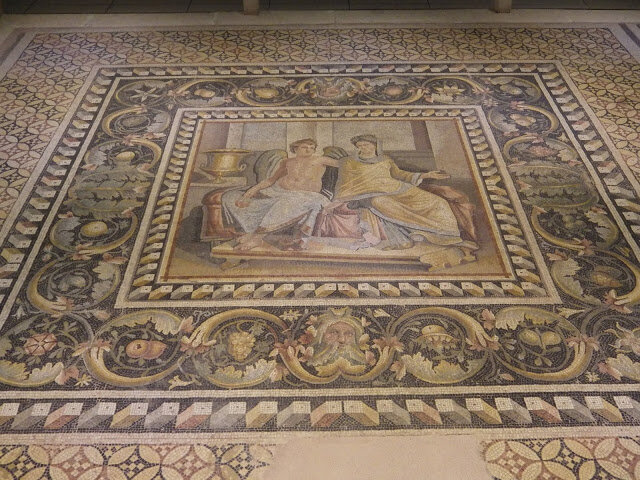
Eros and Psyche in the Gaziantep Mosaic Museum
The Gaziantep museum was opened in 2011 and holds the huge collection of recovered mosaics. Possibly one of the best museums in the world I have visited, the curators have spent a lot of time and effort in showing off the beauty of the mosaics. Some are placed on walls so you can closely inspect them, while others can be walked over via clear glass bridges.
Pride of place in its own room is the ‘Gypsy Girl’ mosaic. A piece of art that is recognisable all over Southern Turkey as it is used in almost all the publicity brochures and websites for the region, it is thought to be an image of Gaea, the goddess of earth.
It was one of the last mosaics recovered from Zeugma from a villa that had already been ransacked by traffickers previously. Hidden under layers of dirt, it had been totally missed. A special technique has been cleverly used by the artist to make the eyes follow you around no matter what angle you look at them. A beautiful mosaic in an incredible museum.
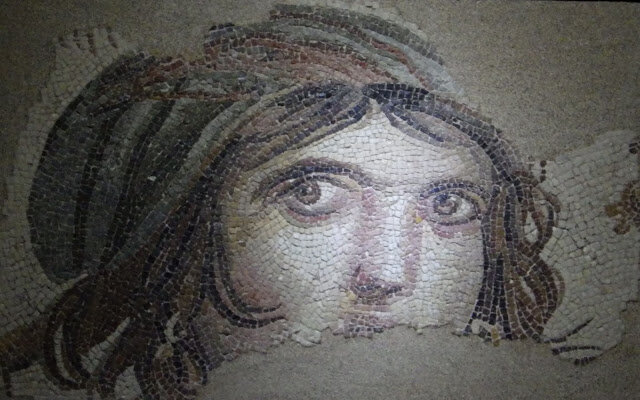
The Gypsy Girl in the Gaziantep Mosaic Museum
Source: farflungplaces.net